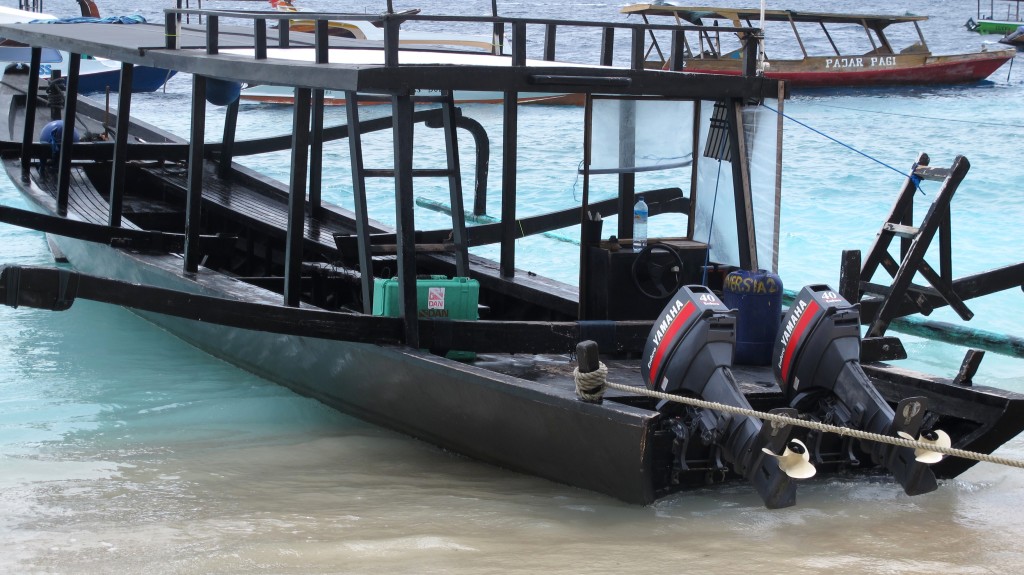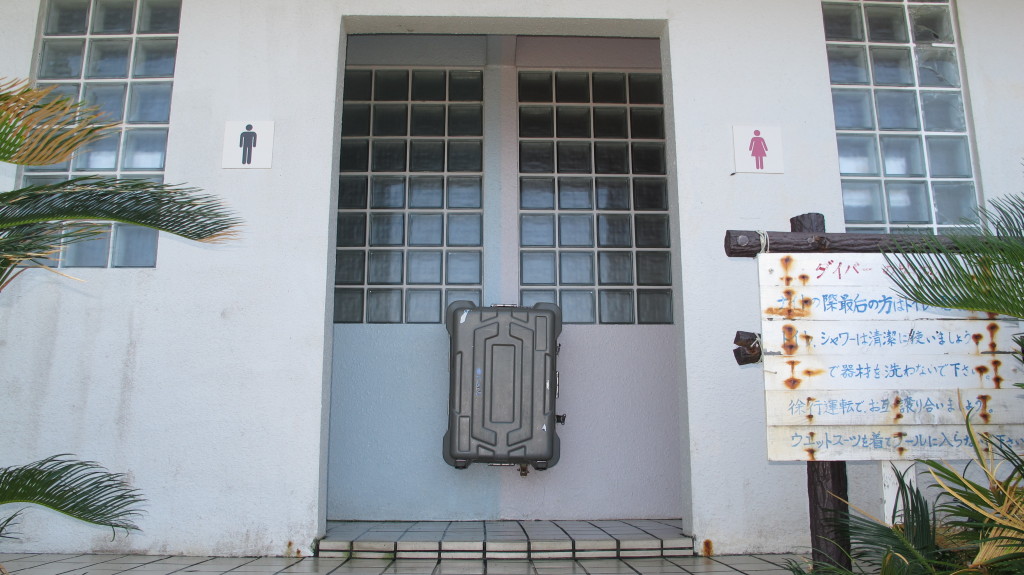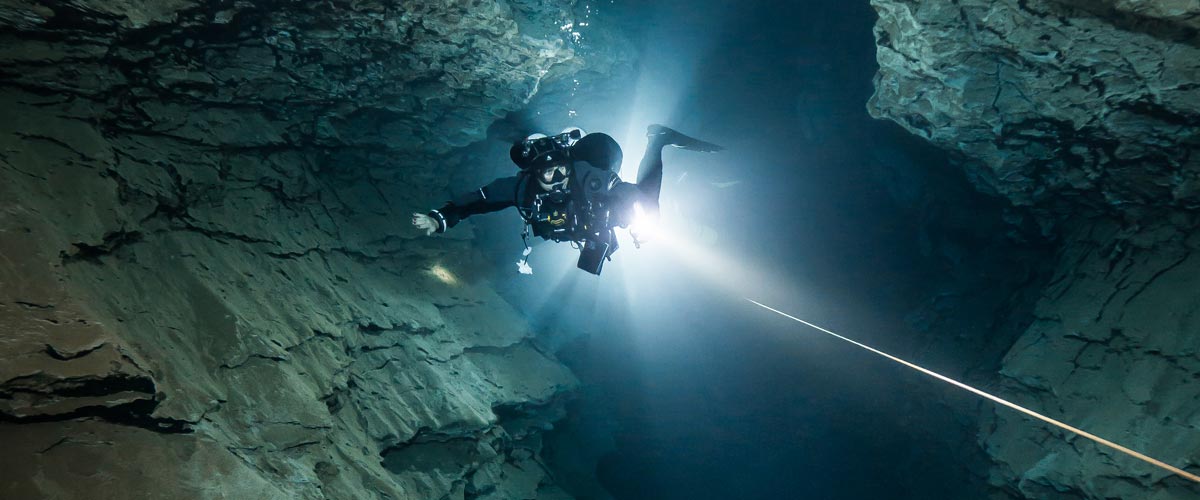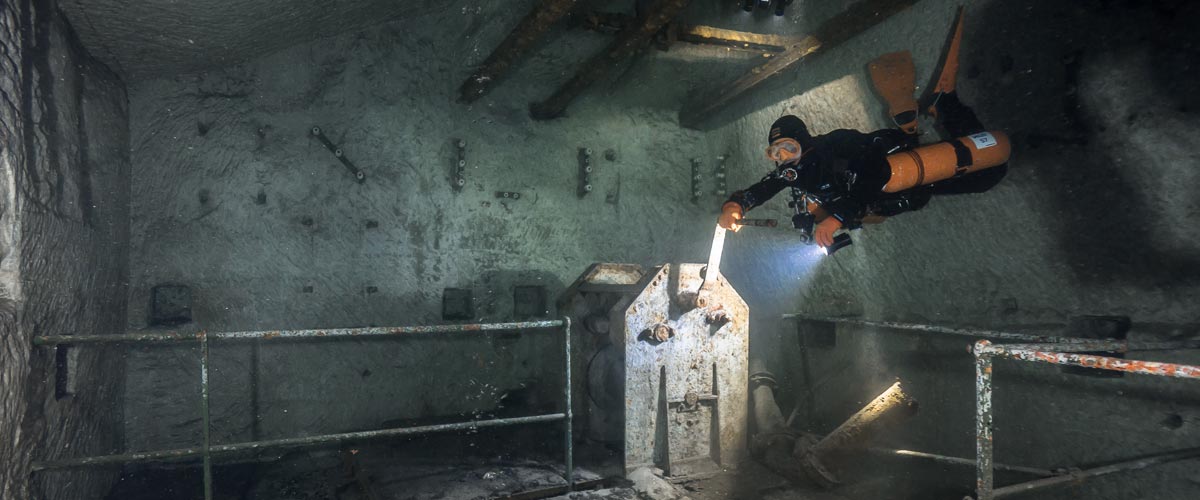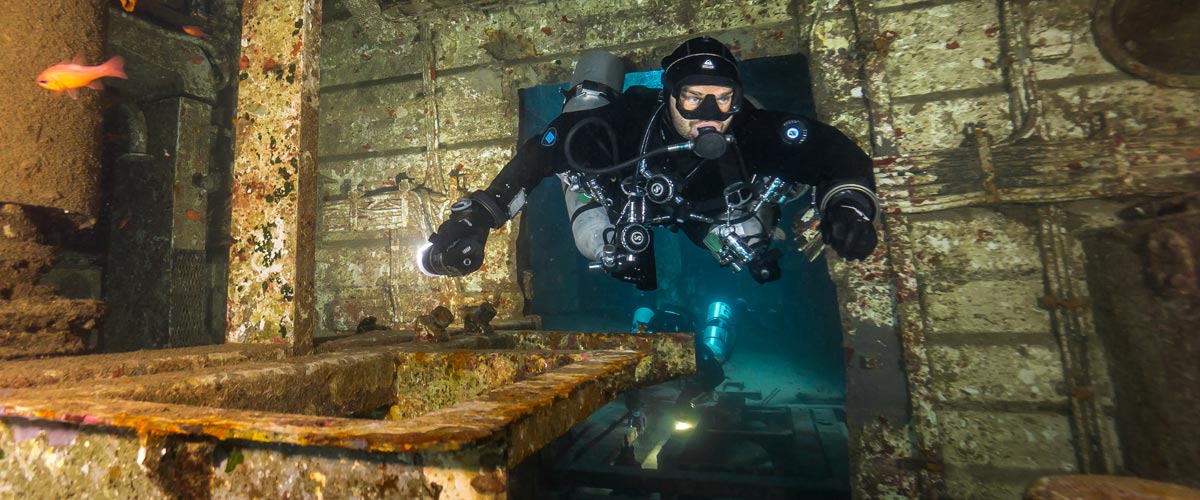Dive Training Blogs
Scuba Professional: Column No. 3
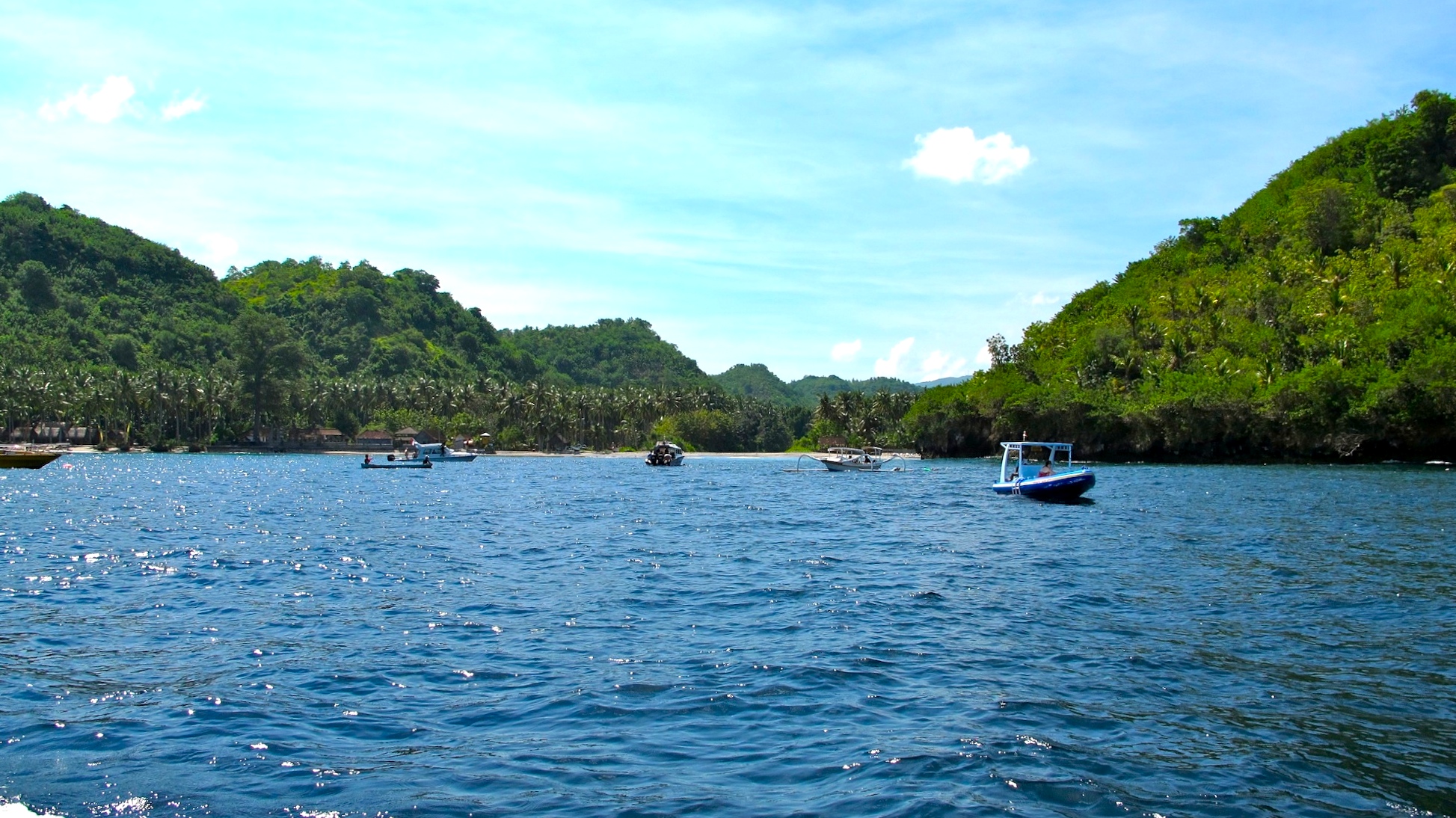
Where’s the Oxygen?
Simon Pridmore looks at how prepared dive operations really are to deal with a diving accident and suggest that we ask one key question before we choose who we want to take us diving.
I was a guest on a dive boat a few months ago. We had just arrived in Crystal Bay, a notorious diving accident black spot on the outlying Balinese island of Nusa Penida, when our attention was drawn by a burst of frenetic activity next to a neighbouring boat. A wet-suited figure was being manhandled over the side of the boat and laid out on deck. A couple of crewmen hunched over the figure while everyone else on board stood to one side, heads craned in concern. Seeing us approach, one of the crew shouted over and asked if we had oxygen. We did and we handed everything we had over to them as the boats met bow to bow. They thanked us, then turned and headed off at full speed to the main island of Bali, a good 45 minutes rough ride away.
I never found out what happened to the injured diver, nor what had caused the accident, but the combination of cool water, fast current and depth at the edge of this bay, where oceanic sunfish come to be cleaned, has caused more than a few inexperienced divers to elect for a rapid ascent when they want to “just get out of there!”
The Wrong Choice
Once the key first aid concerns of monitoring consciousness, airway and breathing have been taken care of, the recommended treatment in a situation like this is administration of 100% oxygen. The oxygen should be delivered as soon as possible and continuously until a diving doctor instructs that it should be interrupted or until there is no more left. Therefore every responsible dive operation, whether boat or land-based, should carry a sufficient supply to enable at least one diver to breathe oxygen all the way from the dive site until they arrive at a medical facility which has oxygen on tap.
I have seen and heard this statement or a variation of it repeated hundreds of times in my diving career. In fact, many of you probably just skimmed through the paragraph, saying to yourself “yeah, yeah, yeah, tell us something we don’t know.” As the importance of oxygen is so well known, therefore, you might expect that all dive operations would be adequately prepared to deal with a diving accident. Sadly, as the diver in this story discovered, this is not the case.
A Key Question
Before you dive with any operation, no matter how apparently professional it seems, make sure they have the right answer to a key question, “Where’s the oxygen?”
A friend tells a story of an enlightened diver who went to a resort destination in Southeast Asia and made a tour of the dive centres along the beach, enquiring about rates, service and facilities. When she popped the oxygen question, two shops told her they did not have any, telling her that oxygen was “over-rated.” When she replied that she had heard that it was actually essential, they suggested that she was gullible to fall for lies put about by more expensive dive centres to justify their higher rates.
It is not just cowboy operators like this who are under-prepared and under-equipped to deal with a diving emergency. In your excitement to go diving, you may not have noticed how many dive briefings gloss over the key issues of where the oxygen is and who among the dive team is qualified to deliver it. This is not always an oversight. In many cases there is actually no plan to deal with a DCI incident. The rationale given runs along the lines of “it hardly ever happens so it is not worth thinking about until it does.”
Failing to Plan
Even top dive operations are guilty of failing to plan adequately. For example, liveaboards often carry oxygen on board the mother-boat but not on the small tenders that ferry divers to and from the dive sites. Often this ferrying involves long rides to allow the mother-boat to float free in the deep channel away from the reefs. This means that if a diver blows to the surface, the nearest oxygen is a long way away and the delay in delivery could make the difference between tragedy and survival.
It is not enough just to have oxygen on board the tender. You also need sufficient personnel to bring an unconscious or disabled diver into the boat and to drive the tender while the diver is being given oxygen. Again, you might expect that dive operators would run training scenarios to make sure that they are able to deal effectively with an injured diver, but the number of times you encounter situations where there is only one person, the boat driver, left on the boat after the divers have gone underwater suggests that they do not. Or perhaps they run the accident scenarios but the problems that these raise and the amount of money and trained personnel that they would need to cure the problems mean that the issue is just filed away in the “too difficult” drawer and they revert to the “hardly ever happens” policy stance.
The Big Green Box
The reassuring visible presence of a big green box on a dive boat is not always, by itself, a reliable indicator that the dive operation is prepared to deal with an injured diver. Given that accidents that require immediate delivery of oxygen are thankfully rare, the oxygen kit can sit for a long time without being deployed. Stories abound in the dive industry of boat crews turning to the kit in an emergency and finding that the unforgiving marine environment has caused the rubber hoses to waste away and corroded the cylinder valve to the point of immobility!
So, when the question, “Where’s the O2?” is greeted with a vague gesture in the direction of the green box, make a point of asking someone to open it so you can see what sort of condition it is in and if that cylinder with the reassuring green band actually has gas in it.
This may not make you very popular with your busy guide but as a diver you have a vested interest in ensuring that the people you are paying to take you diving are taking their responsibilities seriously – and the prospect of a few awkward questions might just encourage the idle or negligent to get their act together!
Read more from Simon in his latest release Scuba Professional – Insights into Sport Diver Training & Operations and his bestselling book Scuba Confidential – An Insider’s Guide to Becoming a Better Diver, both available from Amazon in paperback and e-book versions.
Blogs
Intro to Tech: What is it about?
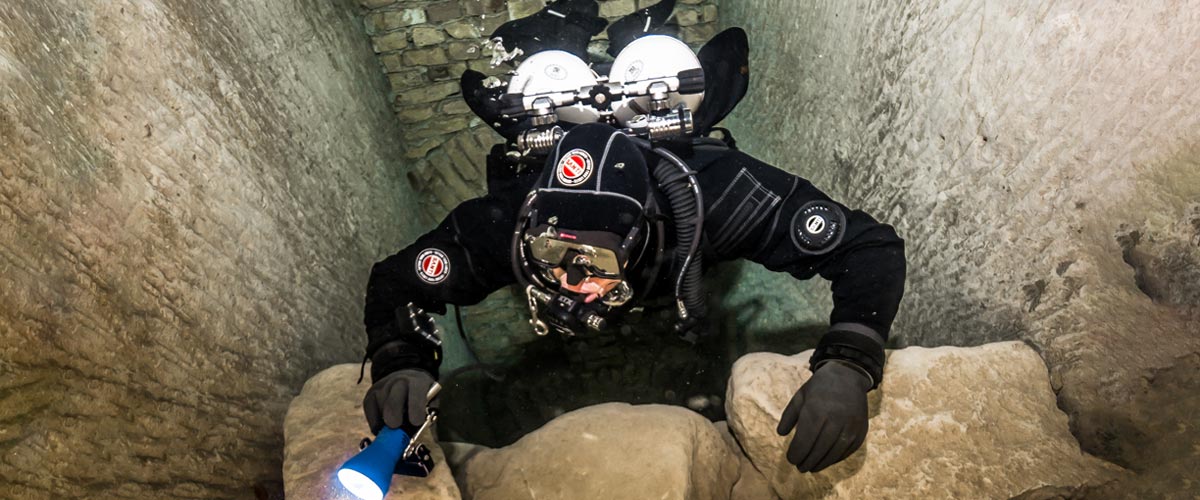
Article by José Pablo Mir
Pictures by Cezary Abramowski
The world of technical diving is exciting. It opens the door to new sites, depths, and bottom times. More importantly, it opens our minds to a new way of planning, facing, and experiencing dives, even those not purely technical.
Becoming a technical diver is a process, and like in other aspects of life, we should find the proper entry point that suits us best based on our knowledge and experience. The Introduction to Technical Diving course from TDI -the world’s largest and most recognized technical diving teaching organization- is the best option for divers who have yet to gain experience in the fundamental aspects of this new practice. The course’s content and its embrace of new techniques and technologies make it possible to acquire a solid foundation to learn and gain experience in this practice properly.
Becoming a technical diver is not something that happens overnight, whether deciding to become one or receiving a certification card stating we are now technical divers. It is a slow process extending farther away than any introductory course. It requires effort and dedication. But it will bring us satisfaction from day one -or two.
It is a matter of mentality
First, we must understand and accept that technical diving, involving greater depths, longer bottom times, exotic gases, virtual or real ceilings, and more, comes with higher levels of risk than the sport diving we have been practicing until now.
Although this discussion usually starts with a warning about risks, as I’ve done in the previous sentence, our practice is not a game of chance.
Technical diving is a rational activity that requires maturity and good judgment, and we will put everything into ensuring that each dive is a successful one -meaning we return from it safe and sound. With this understanding, we will strive to establish a mental attitude more aligned with our practice and its realities.
This new “technical diver” mindset we will develop will lead us to be more cautious in our executions, more analytical in our plans, more rational in our strategies, and more detailed in our procedures.
Experience will keep teaching us to know ourselves better, to keep our anxiety and other emotions under control, and to manage our impulses. Over time, our senses will sharpen, and we will be more attentive to the particulars of the situation we find ourselves in.
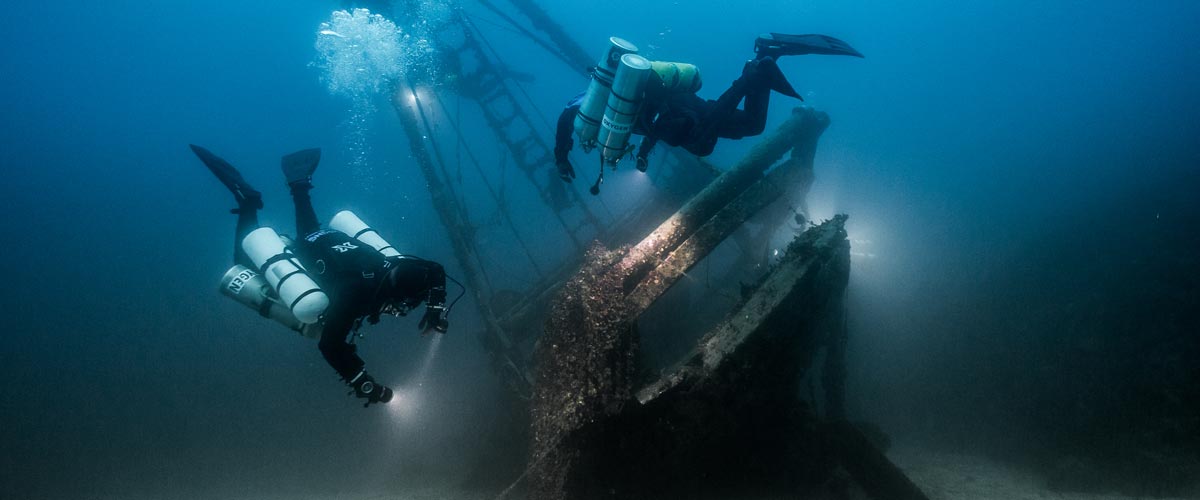
Strategies and procedures
Our strategies, those broad guiding lines tracing the path to follow, from how to approach planning to where, with what, and how we are willing to get there, will be more specific and more practical. Not because they magically become so, but because we will consciously and deliberately frame them that way.
We will establish clear, concise, and realistic procedures. Not only for the undesirable situations that may present themselves but also for those that are part of our dive objectives.
Even though, as technical divers, we often use equipment different from what we were previously accustomed to, it is essential to note that the gear does not make the diver. In a way, we could consider such equipment as the necessary tools to implement what our goal seeks to achieve, according to our strategies and procedures.
Technique plays an important role
We must put our greatest effort into learning and perfecting the different techniques we will be acquiring. Buoyancy, trim, propulsion, cylinder handling, deploying DSMBs and lift bags, valve drills, and more are essential skills we must begin to master to progress in our art. What we cannot do, when we need to do it, can harm us.
Our techniques must be effective and achieve the purpose for which they were devised. But they must also be efficient and require the least resources possible, including the time they take and the effort they demand. Effectiveness and efficiency will prevail over beauty and other considerations that may come to mind, although none of them should be mutually exclusive. A technique executed efficiently and effectively tends to have an inherent beauty.
Refining techniques is a lifelong mission. Some of them will be easy to master from the go; others, on the other hand, will be our life mission and will require many repetitions just to resemble the idea we have in mind of how they should be executed.
We must consider the environment
Our learning, the needs and musts of the practice we engage in, the experience we gradually gain, our strategies and procedures, and even our equipment and tools change with the environment.
Diving in the ocean, everything about us must be suitable for ocean dives. Conditions there rarely emulate those found in a pool, lake, or river. Variable winds and currents, greater depths, visibility conditions, other divers with uncertain skills around us, marine life, maritime traffic, distance from the coast, and many other factors add complexity and uncertainty.
It is never necessary to master the pool on the first day, but planning and aspiring to gradually cope with the ocean’s conditions is essential.
The cost of good training
We are aware that our resources are often scarce in relation to the possibilities of use we could give them if they were not. To a greater or lesser extent, we are part of the economic reality in which we are embedded.
Fortunately, the cost of good technical diver training is not an entry barrier. Comparing training and equipment costs, we see that the former are generally lower. Yes, lower cost for personalized service, essential to our future
performance and safety, than for a series of mass-produced products that are mere, albeit necessary, tools for an end.
The value of good training
The value of the training we received encompasses a range of characteristics, from emotional and methodological to technical and technological. TDI and its Introduction to Technical Diving course offer a deep and modern approach, with a teaching strategy that aims to create thinking divers, not merely obedient ones.
As technical divers, our knowledge is our primary tool. In this type of activity, what we don’t know can harm us.
Is this course optional?
Unfortunately, the fact that this Introduction to Technical Diving course is not a prerequisite for any subsequent training is an invitation to consider it optional. And we all know what usually happens to “optional” under budget constraints.
However, this course should be seen as optional only by those divers who are somehow familiar with the use of technical equipment, who have a mindset more in line with the requirements of this type of diving, who plan and execute the dives the proper “technical” way, who know their gas consumption rate, who are not intimidated by non-decompression tables, who feel comfortable using their dive computers, and know the techniques and have at least an acceptable level of buoyancy, positioning, and propulsion. Those can go straight to a more advanced training course, such as TDI’s Advanced Nitrox.
We must ask ourselves whether or not we are in that group.
Remember our goal: to have fun
Recreational diving is our passion. Jumping into the water carrying heavy equipment and having properly dotted our I’s and crossed our T’s have only one ultimate goal: fun. This is the activity we have chosen as a hobby. We must enjoy it; it must give us pleasure and make us vibrate.
Having a good time is not optional!
Blogs
Four opportunities to go pro in 2024 with Dive Friends Bonaire
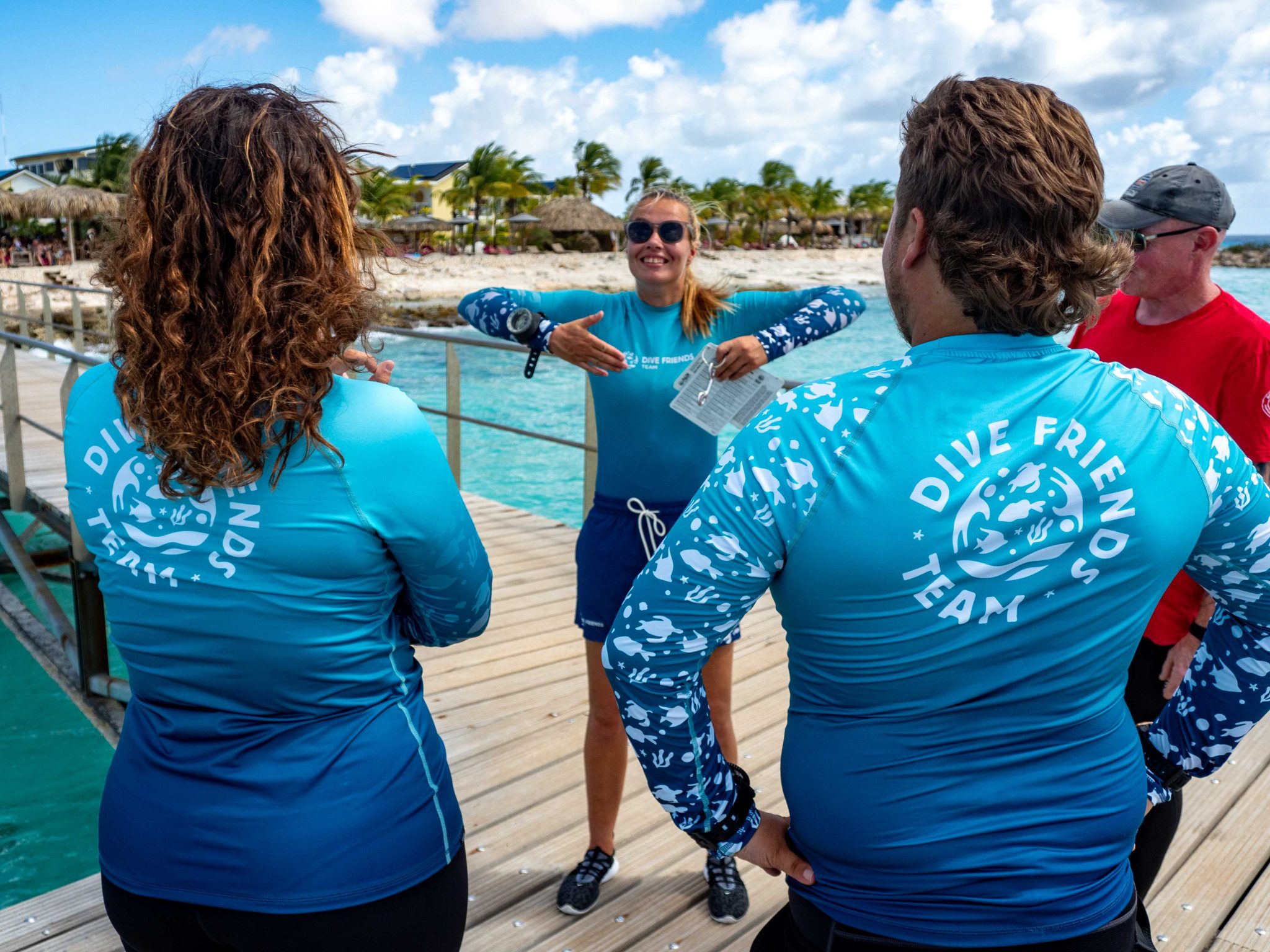
Dive Friends teaches the Instructor Development Course (IDC) several times a year to students who are eager to share their passion for diving with the world.
Dive Friends is known for the personal approach throughout the course. Their in-house course director will lead the students through every essential step, mentoring them to achieve their fullest potential as a dive instructor.
Applications for the following IDC start dates are now open:
- 12 April
- 5 July,
- 20 September
- 29 November
Partnership with Casita Palma
If the student opts for the IDC-Deluxe or IDC-Supreme package, their accommodation will be arranged for them at Casita Palma. This small and quiet resort is within walking distance from Dive Friends Bonaire’s main dive shop location and has everything you need to relax after an intense day of IDC training. Breakfast is included, so the student will always be fuelled and ready for their day.
Contact Dive Friends Bonaire’s Course Director Eddy for more information: coursedirector@divefriendsbonaire.com.
-

 News3 months ago
News3 months agoHone your underwater photography skills with Alphamarine Photography at Red Sea Diving Safari in March
-

 News2 months ago
News2 months agoCapturing Critters in Lembeh Underwater Photography Workshop 2024: Event Roundup
-

 Marine Life & Conservation Blogs2 months ago
Marine Life & Conservation Blogs2 months agoCreature Feature: Swell Sharks
-

 Blogs2 months ago
Blogs2 months agoMurex Resorts: Passport to Paradise!
-

 Blogs2 months ago
Blogs2 months agoDiver Discovering Whale Skeletons Beneath Ice Judged World’s Best Underwater Photograph
-

 Gear News3 months ago
Gear News3 months agoBare X-Mission Drysuit: Ideal for Both Technical and Recreational Divers
-

 Gear Reviews2 months ago
Gear Reviews2 months agoGear Review: Oceanic+ Dive Housing for iPhone
-

 Marine Life & Conservation2 months ago
Marine Life & Conservation2 months agoSave the Manatee Club launches brand new webcams at Silver Springs State Park, Florida


